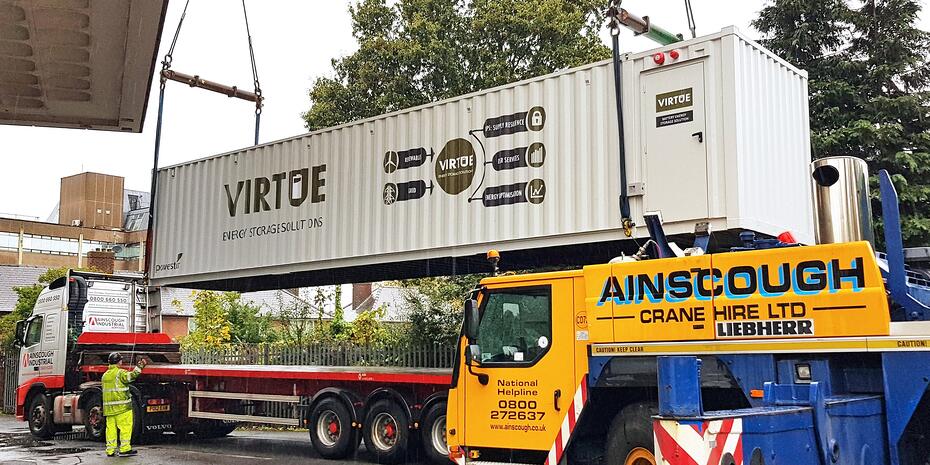
The other day a friend wanted to take some files from my laptop and asked if I could bring her a USB. A few years ago, I had plenty of USBs lying around ready for this exact use. As I searched frantically through all my cupboards, draws and boxes, I realised that USBs had come and gone from my life without me noticing.
This got me thinking about how quickly we have moved in the data storage landscape. Today, my phone stores everything automatically on the Cloud, and I can access it on any of my devices, email it to myself or access it remotely through the internet.
From cave paintings to hieroglyphs, humans have continually evolved how they store information. Today, when we talk about data storage we generally mean digital data storage, which requires an electrical power input to store and retrieve information. As technology has changed so rapidly, to get a full appreciation of our journey to Cloud storage it is worth looking back at how far we have come.
Punch Cards
The first machines used to store data were “punch cards,” which were developed as early as 1725 by Basile Bouchon. The cards were a simple piece of paper with holes punched in pre-defined positions to record instructions, and were used in equipment such as pianos. Over the next century, Charles Babbage developed punch cards that could store instructions and responses, becoming one of the first machine “Analytical Engines”.
Punch cards have had a long and illustrious career as a data storage unit. They were used to collect US census data from as early as 1890, helped decipher secret codes in war time, and are still used today in standardized testing and infamously in voting ballots (see: Bush v Gore 2000). They only fell out of fashion in the 1980s, to make way for bad haircuts, fluorescent leg warmers and the electric synth.
Magnetic Storage
By the 1950s, there had been strong developments in using magnetic tape as a way to store and access data, which would become a precursor to the cassette tape. In 1956 the first useable hard drives were invented by IBM, which rotated magnetic strips on disks. This increased storage capacity up to 5MB and the disks took up an entire room to operate. By contrast, the average iPhone today can store 32GB, and even up to 256GB if you are willing to spend the extra pounds or dollars.
Philips leveraged this technology and in 1963 released the music tape, which acted as a dictation machine and became the most popular way to store and distribute music. When Sony developed the Walkman in 1979, the audio tape exploded in popularity, and transformed the way we listen to music.
Developed concurrently, the first Dynamic Random Access Memory (DRAM) technology was available in 1966, which consisted of a cell of memory that stored information as an electrical charge in a circuit board. This was a key step towards increasing the amount of memory that could be stored in machines.
Floppy Disks
IBM hit another home run in the 1970s with the release of the 8-inch floppy disk. Made with flexible plastic to house magnetic film, it could be widely distributed because it was cheap to make, lightweight and by the 1980s was reduced to 3.5 inches – small enough to fit in your pocket.
Whilst still popular through the 1990s, the kids today will most likely recognise it as the “save” icon in their Microsoft Office software suite. Unless of course, you work in the Pentagon, who admitted in 2016 that the US nuclear force still use the 8-inch floppy disks.
CD-Rom
Released in 1985, the Compact Disc Read-Only-Memory (CD-ROM) was a small, lightweight way to store text, graphics and audio, and evolved music and movie distribution for the next generation. One disk could store as much data as almost 500 floppy disks. The DVD quickly followed and by 1995 the higher storage capacity in the same CD size rocketed the new medium to widespread usage. Blu-Ray disks further enhanced the size of storage, and helped bring the box-office-quality movies direct to your living room.
Flash Drive
The turn of the century brought with it the Universal Serial Bus (USB), an instant success due to its user-friendly “plug-and-play” style, tiny size and comparatively huge storage capacity – as much as 125GB on a 30 gram stick. A USB stick can be rewritten, is more durable than CDs and floppy disks, and is not impacted by electromagnets, so it can go through airport security unscathed.
Around the same time, multimedia and Secure Digital (SD) cards were also a new medium to store digital information. These developed into modern iterations of the Solid State Driveshare (SSD), which acts as a separate box that can be plugged into a computer like a USB stick, but is faster, more secure, and less portable.
The Cloud
The general trend for data storage has been to minimize physical size, maximize repository space. So what happens when you get rid of the need for a physical storage unit entirely?
Though originating as far back as ARPANET in the 1960s, the term “Cloud” used in a storage context did not enter the popular lexicon until Amazon dropped their Web Services (AWS) in 2006. The best way I have heard the Cloud described for non-techies is storing information on “someone else’s computer”. Quite simply, storing data on the Cloud involves saving your information at remote location and accessing it over the internet.
Cloud storage can save companies significant time and money, increase the accessibility and usability of the data, as well as reduce the risk of losing your data. Where you could scratch a CD or a step on a USB stick, data is stored virtually and backed up multiple times.
What’s next?
Looking back at the evolution from punch cards to a virtually limitless, omnipresent storage unit it is awe-inspiring to see how far technology has come in a short amount of time. As for the future of storage, there have been suggestions to use human DNA (which supposedly could fit all the world’s data on a teaspoon), helium filled hard drives or the ever-elusive quantum computing. Suffice to say, while the digital pioneers shoot for the stars, it’s reassuring they can always fall back on the Cloud.









